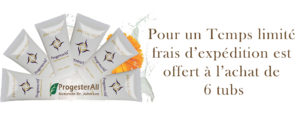
Progesterone is an important female sex hormone synthesized by the adrenal glands and ovaries. It has a crucial role in the menstrual cycle, fertility, and fetal development. Having high progesterone levels is essential for maintaining a normal, healthy pregnancy.
Imbalances in progesterone levels increase the risk of miscarriage, intensify PMS symptoms, thyroid dysfunction, weight gain, fibrocystic breasts, an irregular menstrual cycle, and even infertility.
Five Foods that Enhance Fertility and Progesterone Production
1. Fatty fish like sardines, mackerel, and salmon
These fish contain omega 3 and omega 6 essential fatty acids that are crucial during the ovulation phase. They help improve fertility by improving blood flow to the uterus, regulating reproductive health, supporting the release of egg cells from the follicle, and enhancing the quality of the egg cells.
Omega 3 from fish and fish oil also constrict the blood vessels in your nether regions for faster arousal.
These fish are also rich in protein and magnesium, a key nutrient in progesterone production and maintenance of hormonal balance.
If you don’t like fish, flax seeds, pumpkin or squash seeds, nuts, okra, raw plantain, spinach, black beans, and raw grain cereals are good substitutes.
2. Oysters
Oysters are known as a fertility and libido-enhancing food because they contain large amounts of zinc. Zinc helps improve the health of both sperm and egg. Studies also suggest that it helps increase ovulation in women and semen and testosterone production in men through a 15 mg daily consumption.
Zinc is also important in producing adequate amounts of progesterone. It triggers the release of follicle stimulating hormones that stimulate progesterone and estrogen production and promote ovulation.
It is best to eat oysters in the middle of your cycle before ovulation. Other foods rich in zinc are nuts, eggs, wheat germ, lean red meat, dark chocolate, crabs, veal liver, chickpeas, baked beans, and pumpkin, watermelon, and squash seeds.
3. Foods rich in Vitamin B
Towards ovulation, B vitamins and other supporting nutrients are needed for the egg’s release, to promote implantation, cellular reproduction, and to maintain the optimum progesterone levels. Vitamin B also helps the liver break down estrogen levels to control its amount and maintain hormonal balance.
Foods rich in vitamin B, specifically B6, are whole grains, poultry, lean red meat, seafood, beans, potatoes, spinach, fortified cereals, and bananas. Whole grains especially oats, also contain vitamin E that aid in producing healthy eggs and sperm.
4. Fruits and vegetables rich in Vitamin C
Blakeway also said that high levels of Vitamin C are found in the follicle upon the release of the egg, which indicates that it also plays a role in progesterone production.
Eat plenty of citrus fruits, kiwi, tomatoes, broccoli, bell peppers, and other vitamin C- rich foods. Elizabeth Ward, M.S., R.D., nutrition consultant and author, helps in the absorption of iron from whole grains, fortified cereals, and beans.
5. Iron-rich food
The Dietary Guidelines for Americans, 2010 identifies iron as a nutrient of utmost concern in women of the childbearing age. It is especially important in women who have endometriosis or experience heavy bleeding.
Iron is an important component of red blood cells and is shed through bleeding, according to Dr. Ward. Since an average woman loses 30 to 40 milliliters of blood over the course of three days to a week, iron supplies are depleted. This results in moodiness, fatigue, bloating, and cramps.
Beans, seeds, green leafy vegetables, fish, and meat are all rich in iron and/or protein. Seeds, greens, and fish also have anti-inflammatory properties which help encourage a healthy blood flow and reduce cramps.


